
March, 2017: For me, this was an outstanding experience. At the outset, it must be understood that is a junket only for those who are physically fit as there is much walking and wading. While being flown to and from various venues was exhilarating, people having any reservations about flying and landing in a small helicopter during windy and rainy weather should not come.
The chopper pilot is the heart of the operation. Our pilot was ex-Navy (Chile) – retired with 24 years of experience flying all kinds of helicopters. The high level of professionalism and constant attention to safety cannot be understated. I personally spent hundreds of hours flying in helicopters with the 101st Airborne in Vietnam. I have flown in all kinds of bad weather in small observation helicopters and Hueys. I had the highest level of confidence in our pilot.
The coordination between the guide and the pilot was superior. Some of the LZs (landing zones) were not flagged. While flying, the guide would direct the pilot by radio to help spot the landing location. Once on the ground, the guide had to see that the fishermen safely departed the aircraft. Then, the guide hustled to extract the gear from the hold to enable the pilot to take off with minimal delay. The same situation was repeated when we were extracted at the end of the day. Despite some moderate bad weather, we flew every day. On one day, the afternoon was cut short due to on-coming high winds.
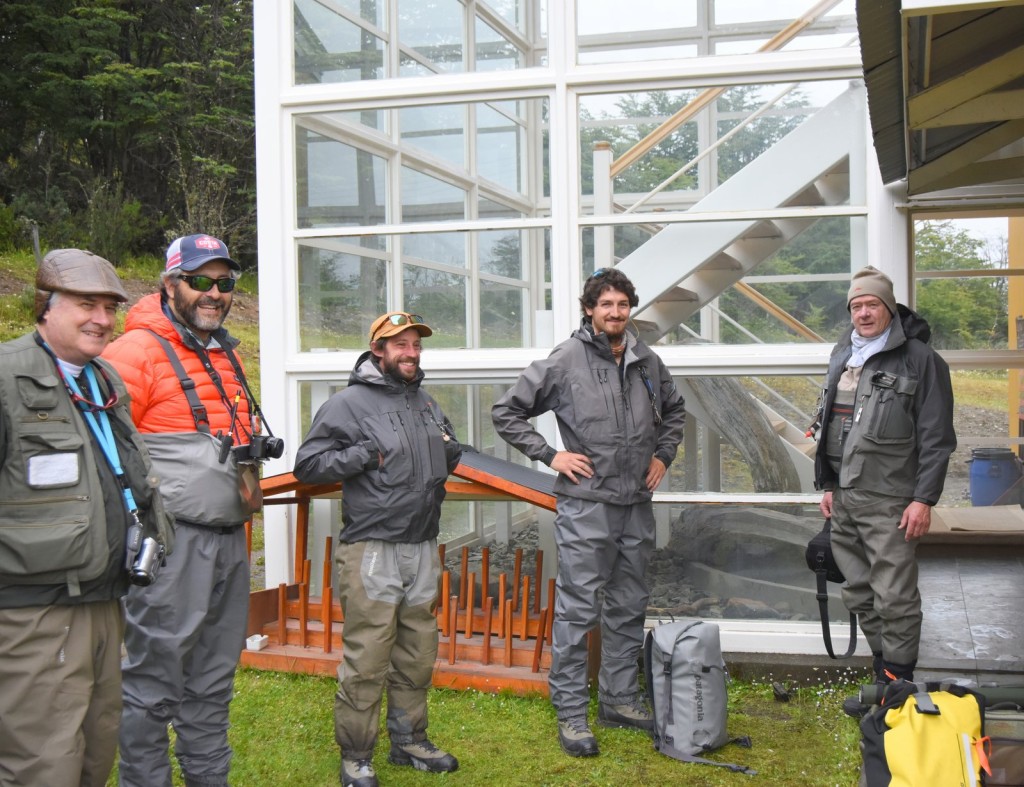
The camaraderie at the Lodge was unique. You felt like you were part of a family. The pilot, his assistant and the guides stayed at the lodge and ate at separate tables in the large dining room. There were a total of six fishermen — four were from Brazil and then George and myself. There were a few non-fishing tourists, meaning that we pretty much had the run of the place to ourselves. The food was excellent – dinners almost as good as Villa Maria. The hotel building is about 30 years old and situated in a large and private park-like setting next to a tidal inlet. They have horses for the tourists to ride. The horses are free-ranged during the day on the lawn. With mountains in the background, and few houses and other buildings to be seen from the hotel, you felt like you were in a rural area. Actually, the top of the airport tower was visible from the hotel. The ride to the airport only took five minutes.
We never saw the other fishermen when we were in the field fishing and hiking. Navarino Island is about 30 x 30 miles square (940 sq miles). Although another fishing party might be a mile or so away, fishing another river, you never heard or saw them while on the ground. Where we fished, there were no buildings, docks or other man-made structures. The Island is owned by Chile. I believe that Lakutaia has an exclusive concession to run its six week fishing operation on the Island.
The daily operation went pretty much like this: Each fishing party left in waves. For us: Breakfast at 7:30 AM, suit up at 8:30 AM, get in the van at 9 AM, depart by helicopter at 9:30 AM, land at 10 AM and start the trek to the fishing holes around 10:30 AM, after the guide had assembled our rods. Walk, wade and fish until about 1:30 PM. Then hike back to the camp and have lunch around 2 PM. After that, leave camp around 2:30 PM for another fishing spot and stop fishing around 5:30 PM. Finally, hike back to camp and be extracted between 6 and 6:30 PM. This is followed by a 30 minute flight to the airport, and dinner is served at 7:30 PM.
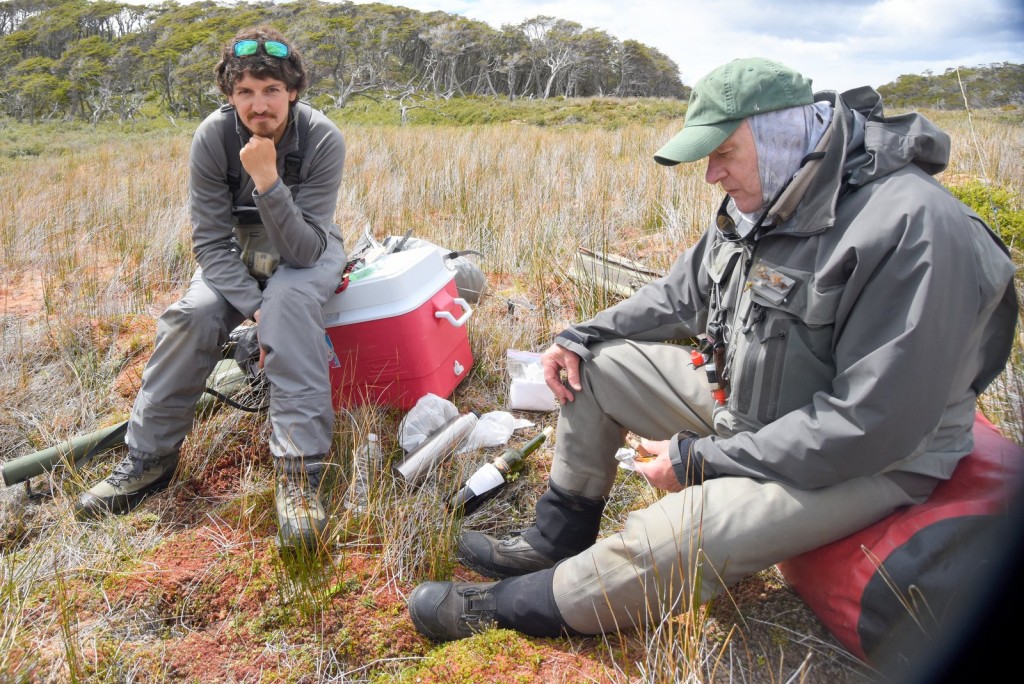
The attached photos show what appears to be flat ground. Yes, the landscape is mostly flat. But, this is bog land. The orange and green blotches on the ground are moss. When you walk, your foot sinks into the ground several inches with every step. If you jump up and down, you can feel the surface undulate. You walk and climb up and down hills and river banks. There are many beavers on the island. Their holes and slides along the river banks are omnipresent. You can step into a hole even if you are attentive (I did and went down knee deep). Everyone is pointing out beaver holes. There are wild cattle on the Island – we saw them from the air, but not on land. We saw one eagle and some ducks, but the landscape is not overrun with animals.
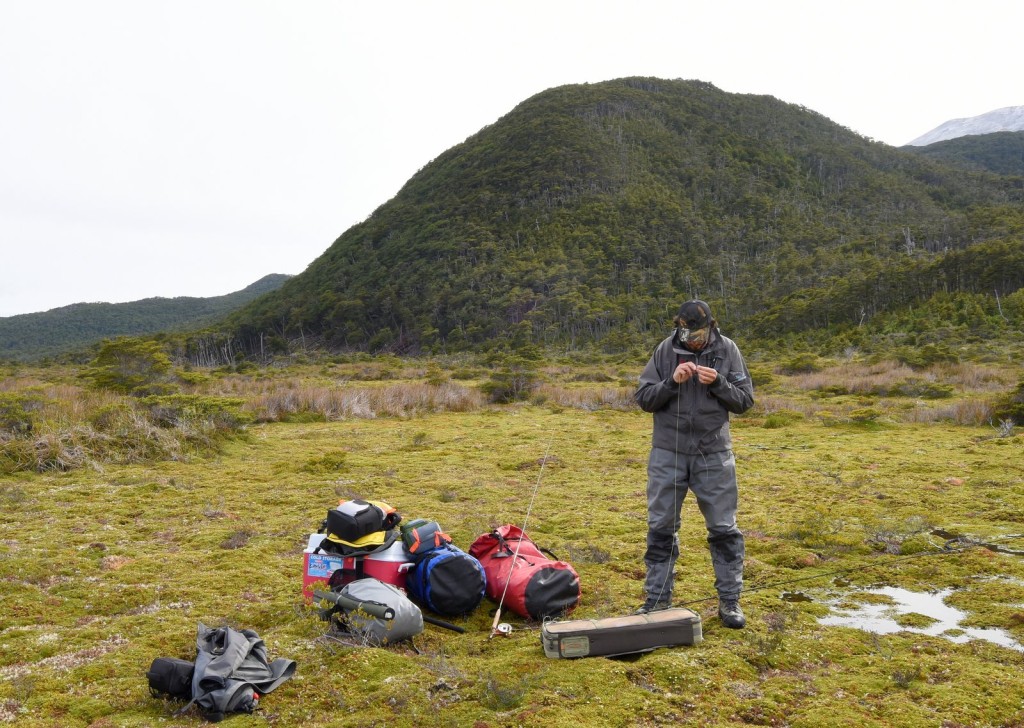
The wading is not tough. Any person, who fished the Battenkill, Little J, Lehigh, upper sections of the Delaware etc., would be right at home. This is streamer fishing. Big streamers and occasionally a Prince Nymph are standard. This is not a dry fly country. Also helpful is a floating line with the occasional use of a sink tip. George carried 2 rods – one with floating and the other with sinking line.
I thought the fishing was good. You have to work for your fish. The guide said that the big brown trout that George caught (about 30 inches) was the largest ever landed on the Island. My browns mostly ranged from 14 to 22 inches (heaviest was four lbs.). I caught three chrome-bright six lbs. sea-run brown trout and several brook trout in the 12″ – 16″ range. The sea-runs were not the size of Villa Maria, but just as strong. Some of the brown trout were on the thin side – they were healthy fish, but probably somewhat undernourished.
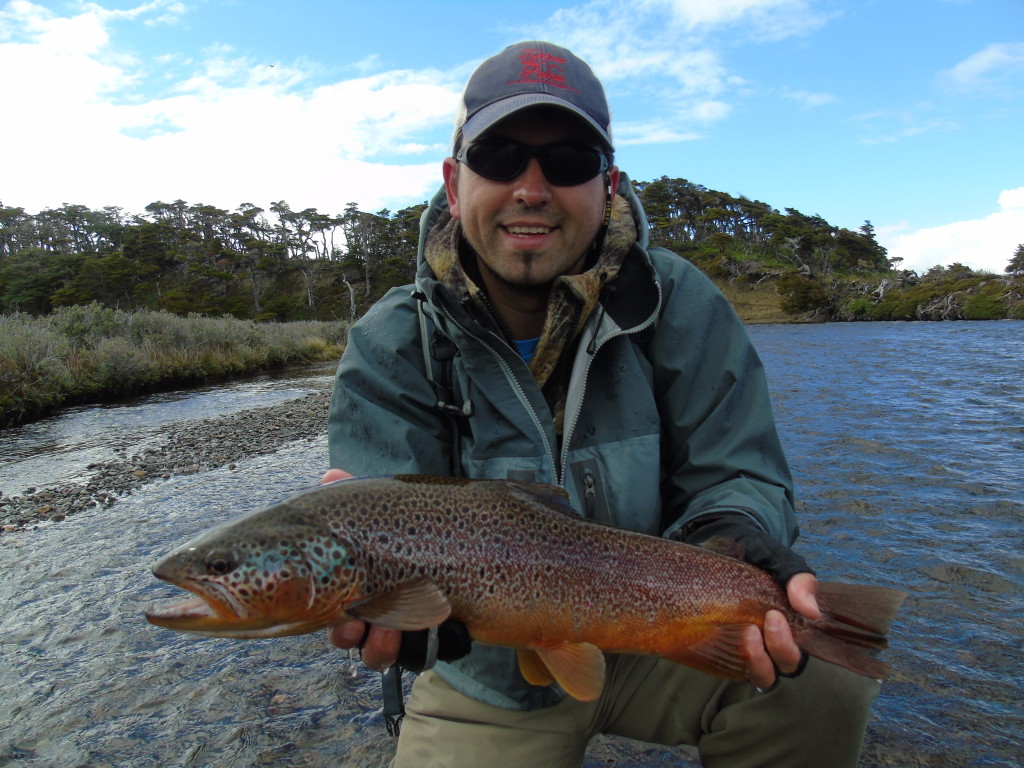
Our guide Felipe was excellent. He’s a young man in his mid-20s. Felipi spoke excellent English and was intimately familiar with all of the fishing venues. He lives in Punta Arenas, and is passionate about fishing. Inexperienced with the net, but, I lost no fish on the landing with him. The net we had could hold up to a 20″ fish and measure up to 24 inches. Felipe was very attentive to our needs – I could not have asked or expected more from a guide.
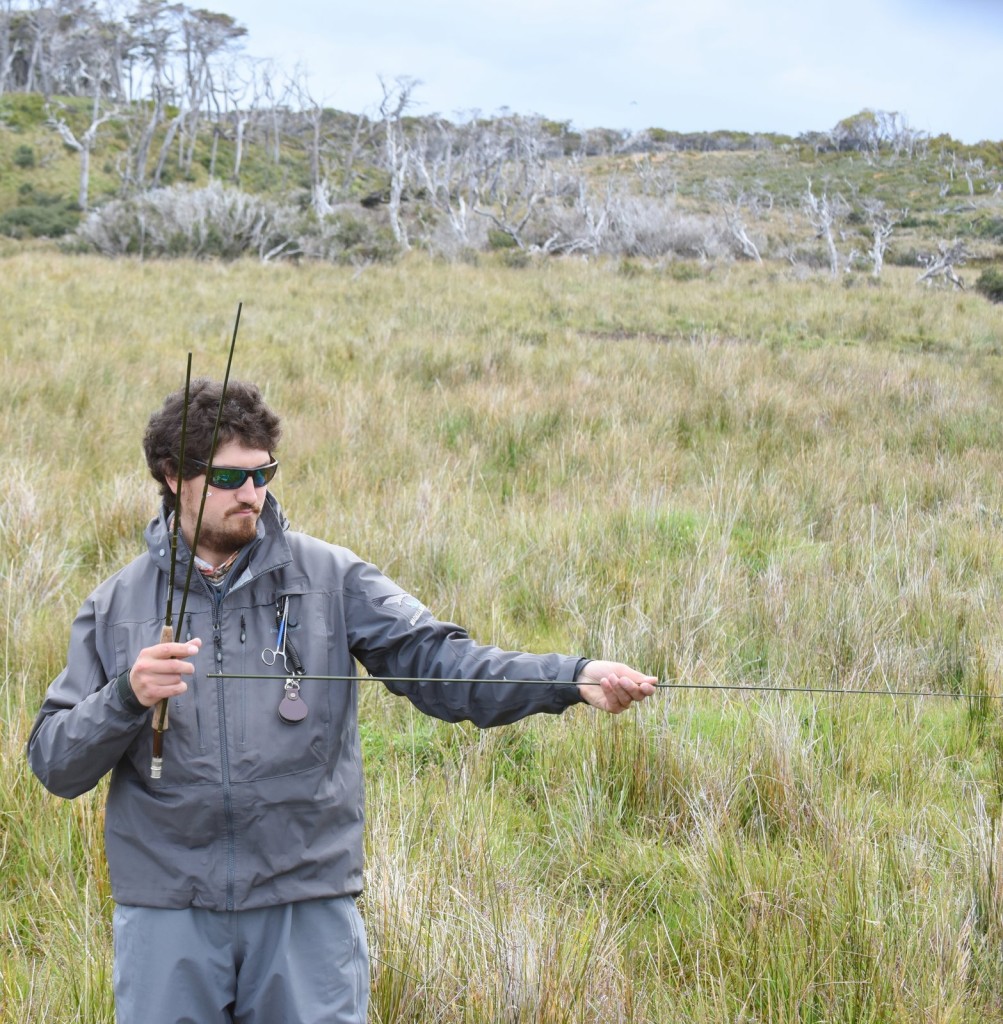
In summary, this is a trip for someone who wants to be in a genuine wilderness, in an unspoiled environment. If you are willing, in the event that you could not be extracted due to high winds, to overnight on the Island. We brought with us two large duffel bags (one red and the other blue) containing survival gear, which we never inspected. When the winds pick up, your bare hands get cold. The casting is easy compared to Villa Maria. Still, you have to contend with wind. You have to be an adventurist type to do this trip. Every day was a new adventure and for me it was thrilling.
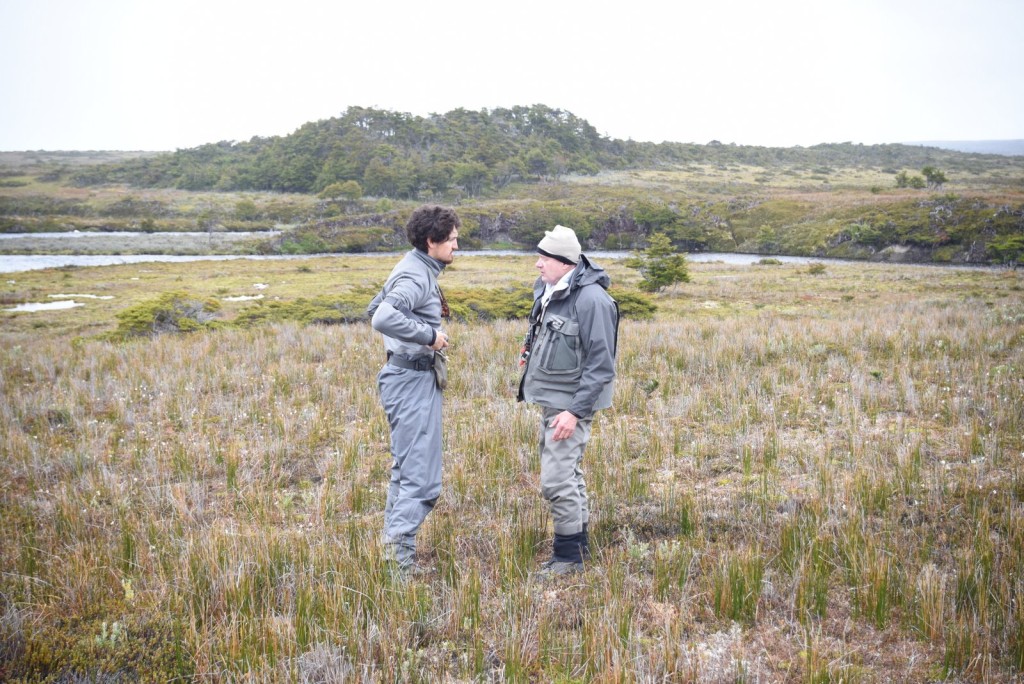
On the evening of our departure, the head guide brought George, the pilot, co-pilot and I to the police station, located on a Navy base. They organized the situation with the customs officer to have our passports stamped, with the stamp post-dated for the next day. We were to be off the Island by 8 AM the following morning. The pilot and co-pilot signed many documents, vouching for our good conduct after we left the building. This has never happened to me before – an accommodation from the Lodge crew that went over and above the call of duty. They saved us the hassle of clearing customs and immigration the next day.
By: Peter E.



